|
Chorale Melodies used in Bach's Vocal Works
Erstanden ist der heilig Christ |
|
Melody & Text | Use of the CM by Bach | Use of the CM by other composers |
| |
|
Melody & Text: |
|
The Easter Carol, “Surrexit Christus hodie,” of which “Erstanden ist der heil’ge Christ” is a translation, dates at least from the 14fth century and exists in several forms. The German hymn also is found in many versions, the one here translated being from a broadsheet printed at Nürnberg in 1544. The melody (supra) proper to the Latin Carol is found in Michael Weisse’s Ein New Gesengbuchlen (Jung Bunzlau, 1531), and is the descant melody of a four-part setting (supra) in Michael Praetorius’ Musae Sioniae (Part V, 1607).
The Easter section closely follows Witt’s order. J.S. Bach begins it with introductory hymns (Nos. 34-36) which summon us to the festival. The last two hymns are songs of triumph, “Heut’ triumphiret” being placed out of Witt’s order so as to end on the thought of Death conquered. The centre of the section is held by “Erstanden ist der heil’ge Christ,” a dialogue between the Virgin Mary and the Angel at the Tomb, which states the circumstances of the Resurrection, the central thought of the festival.
Source: C.T. Terry: Johann Sebastian Bach, Bach’s Chorals, vol. 3 The Hymns and Hymn Melodies of the Organ Works [1921]. p. 43, 148-152 |
|
"Erstanden ist der heil'ge/Herre Christ" (Arisen is the holy/Lord Christ) is another early Reformation hymn to an anonymous text (http://www.christliche-gedichte.de/?pg=10623, https://www.bach-digital.de/receive/BachDigitalWork_work_00000376?XSL.Style=detail). It is based on a 1372 German translation of Surrexit Christus hodie, from on the associated melody (Zahn 288, 8572b) in the Bohemian Brethren hymnbook 1503/1531/1544, text of ? Johann Horn (c.1485-1547), of 19 stanzas including a dialogue between Mary and the angels at the tomb (Stanzas 7-17), and was found in the Dresden Gesangbuch. It is derived from the Latin hymn Victimae paschali, which also is the basis for Martin Luther's "Christ lag in Todesbanden" and "Christ ist erstanden." It is found in the NLGB (EG 105) as No. 94 (Easter, https://books.google.com/books?id=UmVkAAAAcAAJ&pg=PA279#v=onepage&q&f=false). It is found in the Schmelli Gesangbuch as No. 326 (Easter, abridged 5 stanzas). Today it is known in English as "The strife is o'er, the battle done" (https://hymnary.org/tune/erstanden_ist_der_heilig_christ, 6 stanzas) or "Jesus Christ is risen today" (http://kpshaw.blogspot.com/2013/01/118.html).
J.S. Bach set "Erstanden ist der heil'ge Christ" as an Orgelbüchlein Easter chorale prelude (No. 37), BWV 628 (https://www.youtube.com/watch?v=eN1TMuRNAtE), and a plain chorale, BWV 306 (http://www.bach-chorales.com/BWV0306.htm, https://www.youtube.com/watch?v=rh7y9f6NgEA). Another organ chorale prelude, BWV Anh. 51, is doubtful (https://www.baerenreiter.com/shop/produkt/details/BA5290_01/).
The hymn Surrexit Christus Hodie (Zahn 291) is based on a 14th century carol melody (Zahn 1746), published in Nurnberg in 1544, with the original, associated melody of 1531. It is found in the NLGB as No. 101a,b (Easter; German, https://books.google.com/books?id=UmVkAAAAcAAJ&pg=PA296#v=onepage&q&f=false; Latin, https://hymnary.org/text/surrexit_christus_hodie). J.S. Bach's chorale setting BWV 306, uses the Latin hymn as a 19-stanza setting of the text of Valentin Triller (1493-1573), published in Ein Schlesich singebuchlein aus Göttlicher schrifft (Breslau, 1555), home devotions and children’s hymns for the church year. It is found in the Sebastian Bach Choral Book, No. 63 (Easter) with the alternate melody, "Erstanden ist der herrliche Christ" (Zahn 288, NLGB 101b), in eight variants. The best known setting is Samuel Scheidt (https://www.youtube.com/watch?v=DphCBncBSMY).
Source: Easter Season Chorales (William L. Hoffman, April 11, 2018) |
|
Melody 1: Surrexit Christus hodie (Zahn 1747a)
Composer: Anon (1531) |
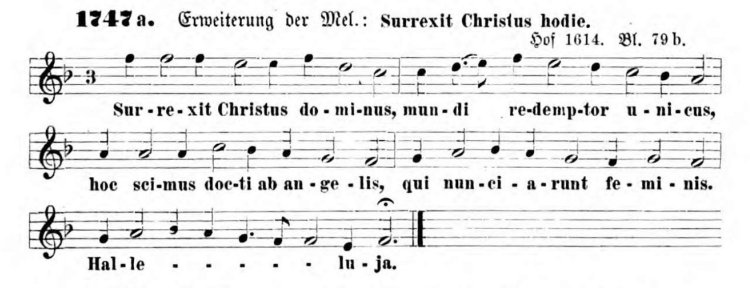 |
|
Melody 2: Erstanden ist der heilge Christ (Zahn 1746)
Composer: Anon (Bohemian Brethren 1501/1531, based on a 14th century melody) |
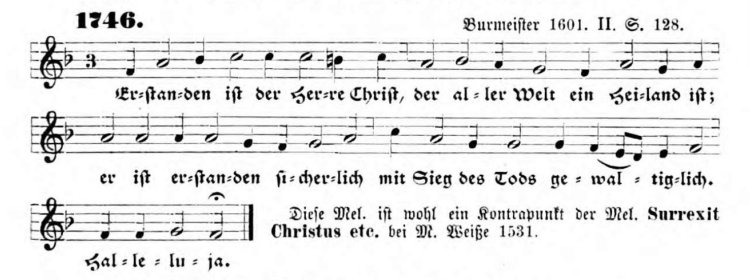 |
|
Melody 3: Erstanden ist der herrliche Christ (Zahn 288)
Composer: Valentin Triller (1555) |
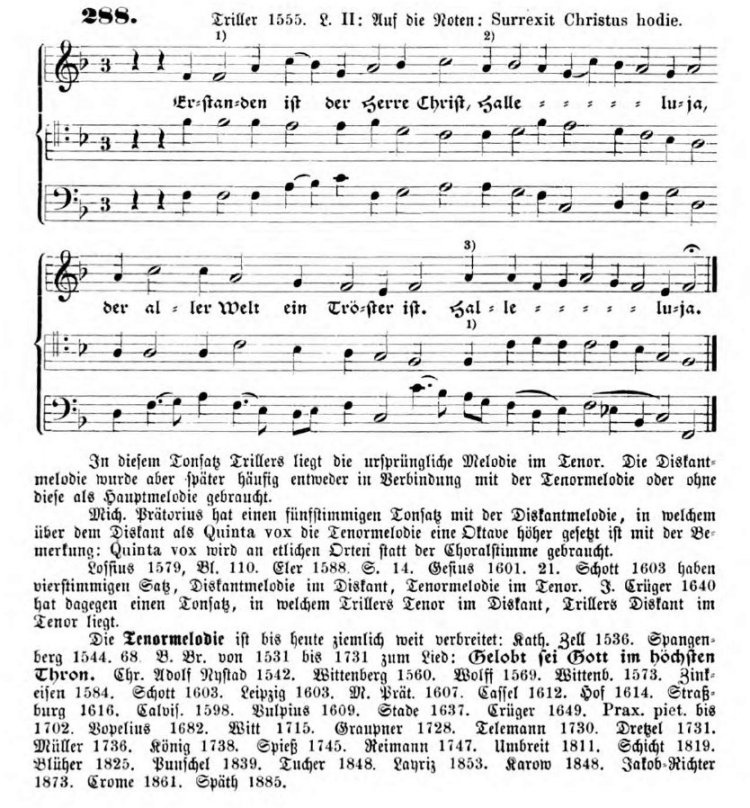
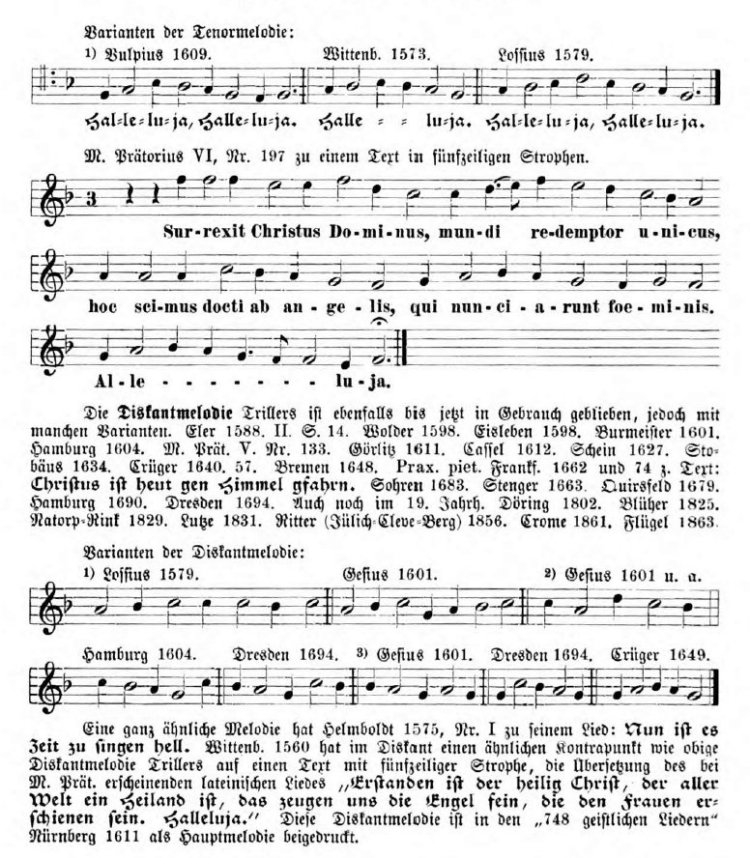 |
|
Text: Erstanden ist der heilig Christ
Author: Anon. (1544), after a 1372 German translation of Surrexit Christus hodie |
|
Hymnal versions Bach may have known: |
|
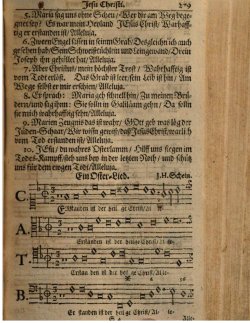
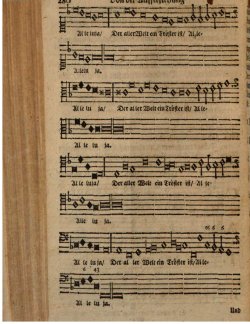
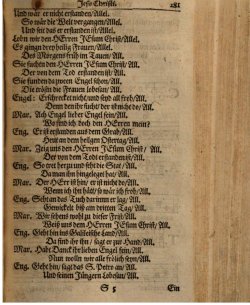
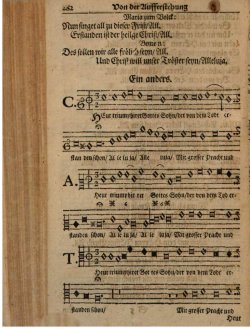
|
|
Melody & text of Erstanden ist der heilge Christ (NLGB 101) from the Neu Leipziger Gesangbuch, pp 279-282 |
| |
| |
|
Use of the Chorale Melody by Bach: |
|
Untexted: |
|
Melody 1: Surrexit Christus hodie (Zahn 1747a) |
|
Chorale Prelude Erstanden ist der heil'ge Christ (I), BWV 628 |
|
The movement, one of the Easter Preludes in the Orgelbuchlein, expresses the spirit and teaching of the festival. The Pedal, in bold intervals, sounds the message of resurrection, emphasized by the upward rush of the parts in the opening bars, while the animated quaver figure expresses joy. Bach employs a similar association of motives in the Christmas Prelude, “Puer natus in Bethlehem” (N. xv. 13), in which the Pedal performs the obeisances of the Wise Men from the East, while quaver passages exhibit their reverent ecstasy. |
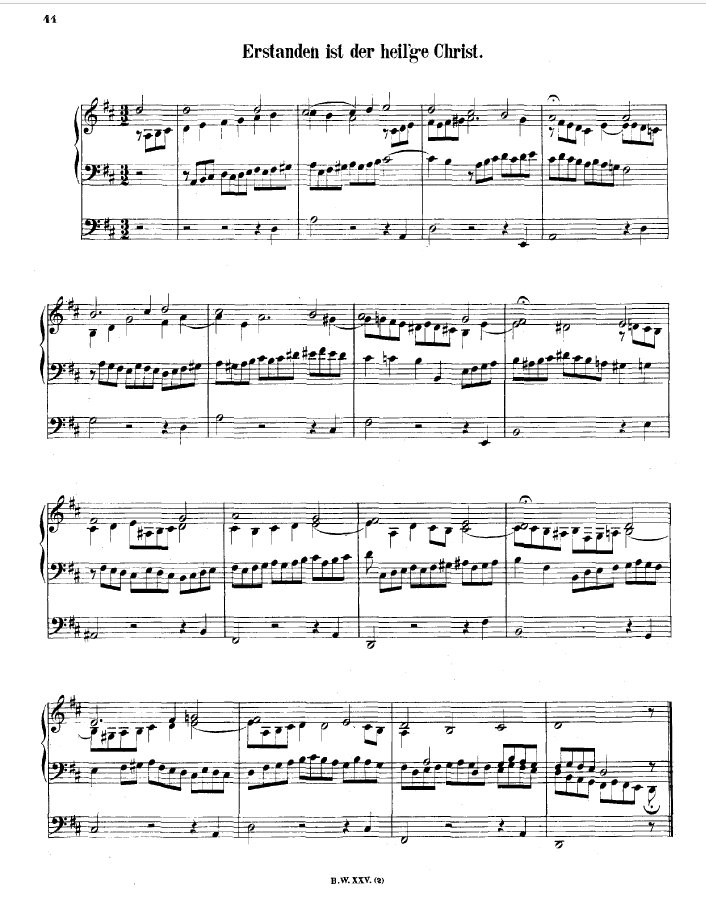 |
|
Text: Erstanden ist der heilig Christ |
|
Melody 2: Erstanden ist der heilge Christ (Zahn 1746) |
|
Chorale Erstanden ist der heilge Christ, BWV 306
Ref: RE 176; Br 176; KE 85; Birnstiel 181; AmB 46II p.149; Penzel 142; BGA 53; BC F58.1; CST 88 |
|
The Choralgesange, No. 85, gives a four-part setting of another melody to which the hymn also was sung, whose evolution from the original (1531) tune is revealed in the following three-part setting in Valentin Triller’s Ein Schlesich singebuchlein aus Göttlicher schrifft (Breslau, 1555), where it appears as the descant to the original melody in the Tenor: |
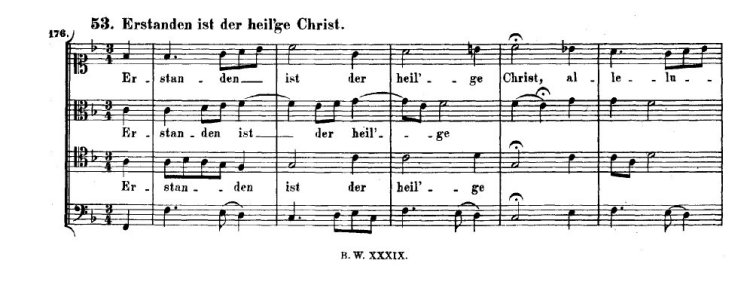
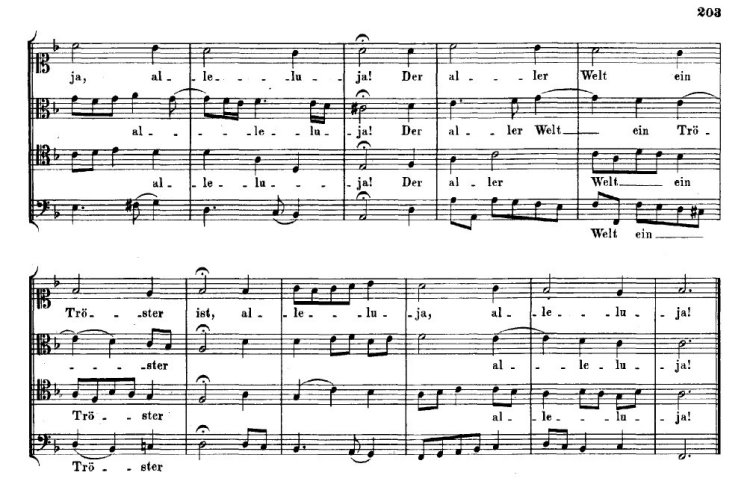 |
| |
| |
|
Use of the Chorale Melody by other composers: |
|
Other settings include Melchior Vulpius (http://www.christliche-gedichte.de/?pg=10623), a Michael Preatorius sacred song (https://www.youtube.com/watch?v=HsUQWLx3FFw), a Helmut Krebs cantata (https://www.youtube.com/watch?v=dfTEFVK7Cuo), a Dietrich Buxtehude cantata (https://www.youtube.com/watch?v=rCXzdB_oSd4), a Nicholas Bruhns cantata (https://www.youtube.com/watch?v=bTPBwf9x8RA), a Johann Gottfried Walther chorale prelude (https://www.youtube.com/watch?v=G91LibVdmIE). |
| |
| |
|
Sources: Bach Digital; BGA; Zahn
Photos from Gottfried Vopelius Neu Leipziger Gesangbuch (Vopelius 1682), were taken from a digital copy of the book downloaded from Bayerische Staatsbibliothek München. This copy is Out of copyright - non commercial re-use (Europeana Rights).
Prepared by Aryeh Oron (October 2018) |